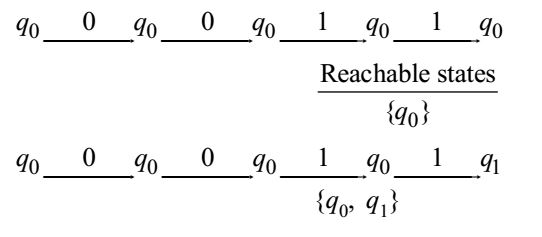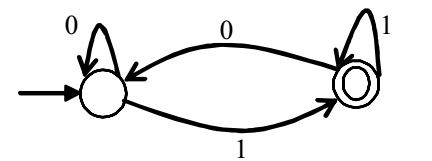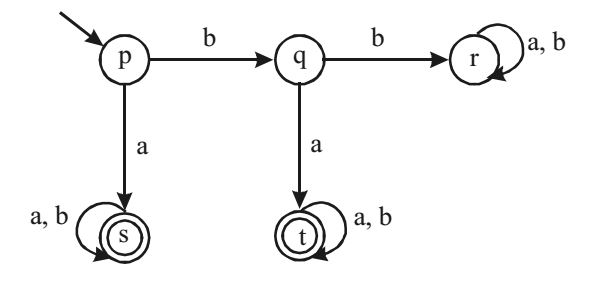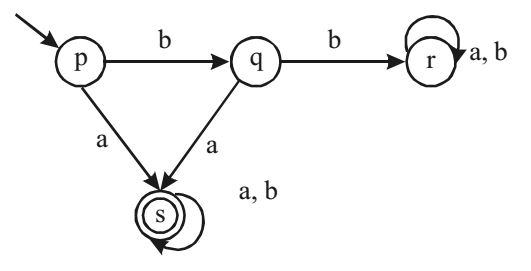Theory of computation miscellaneous
- Consider the finite automata in the following figure.

Which is the set of reachable states for the input string 0011?
-
View Hint View Answer Discuss in Forum
Following paths can be taken by the finite Automata for the input string “0011”:––


We note that no other path is possible for the input string "0011". So, finally union of all three cases gives us the set of Reachable states which is {q0, q1, q2}Correct Option: A
Following paths can be taken by the finite Automata for the input string “0011”:––


We note that no other path is possible for the input string "0011". So, finally union of all three cases gives us the set of Reachable states which is {q0, q1, q2}
- Which of the regular expressions given below represent the following DFA?

I 0*1(1+00*1)*
II 0*1*1+11*0*1
III (0+1)*1
-
View Hint View Answer Discuss in Forum
(I) 0 *1(1 + 0 0 *1)*
(II) 0 *1*1+11*0 *1
(III) (0 +1)*1
(I) and (III) represent DFA.
(II) Doesn't represent as the DFA accepts strings like 11011, but the given regular expression doesn't accept.Correct Option: B
(I) 0 *1(1 + 0 0 *1)*
(II) 0 *1*1+11*0 *1
(III) (0 +1)*1
(I) and (III) represent DFA.
(II) Doesn't represent as the DFA accepts strings like 11011, but the given regular expression doesn't accept.
- The length of the shortest string NOT in the language (over ∑ = {a, b}) of the following regular expression is
______________.
a*b* (ba)*a*
-
View Hint View Answer Discuss in Forum
a * b * (ba) * a *
Length O is present (as it accepts ∈)
Length 1 is present (a, b)
Length 2 is present (aa, ab, ba, bb)
Length 3 is not present (bab not present)
∴ it is 3Correct Option: B
a * b * (ba) * a *
Length O is present (as it accepts ∈)
Length 1 is present (a, b)
Length 2 is present (aa, ab, ba, bb)
Length 3 is not present (bab not present)
∴ it is 3
- A deterministic finite automata (DFA)D with alphabet ∑ = {a, b} is given below.

Which of the following finite state machines is a valid minimal DFA which accepts the same language as D?
-
View Hint View Answer Discuss in Forum
As state (s) and (t) both are final states and accepting a* + b*, we can combine both states and we will get

Correct Option: A
As state (s) and (t) both are final states and accepting a* + b*, we can combine both states and we will get

- Consider the alphabet ∑ = {0, 1}, the null/empty string λ and the sets of strings X0, X1, and X2 generated by the corresponding non-terminals of a regular grammar X0, X1, and X2 are related as follows. X0 = 1 X1
X1 = 0 X1 + 1 X2
X2 = 0 X1 + {λ}
Which one of the following choices precisely represents the strings in X0 ?
-
View Hint View Answer Discuss in Forum
NA
Correct Option: C
NA

